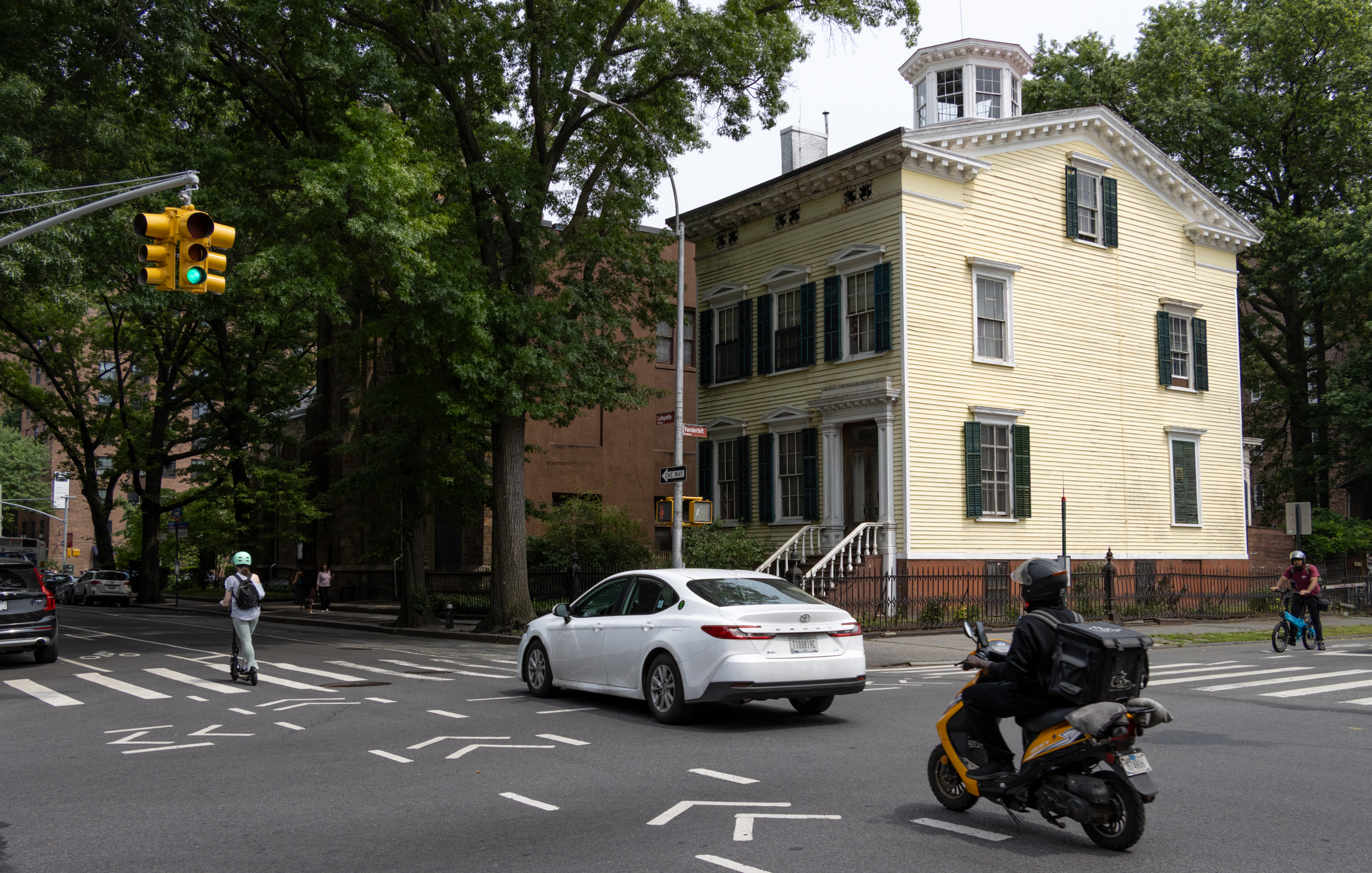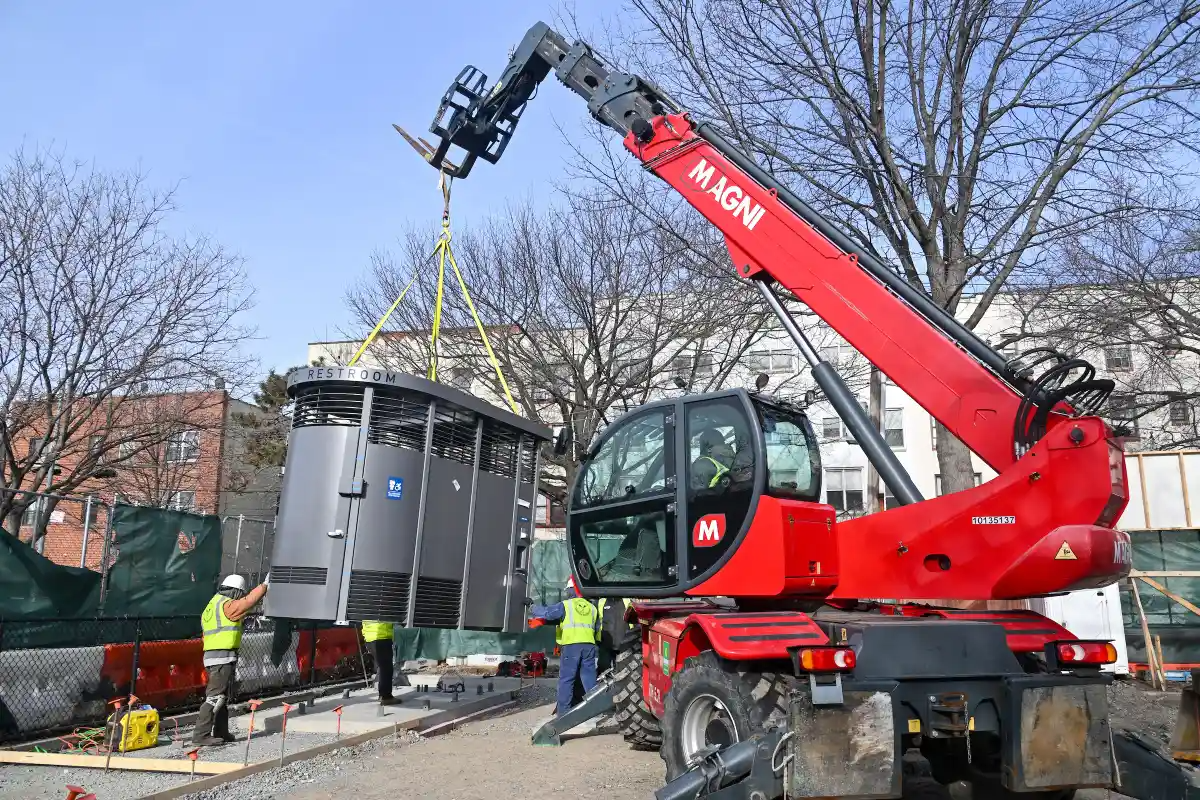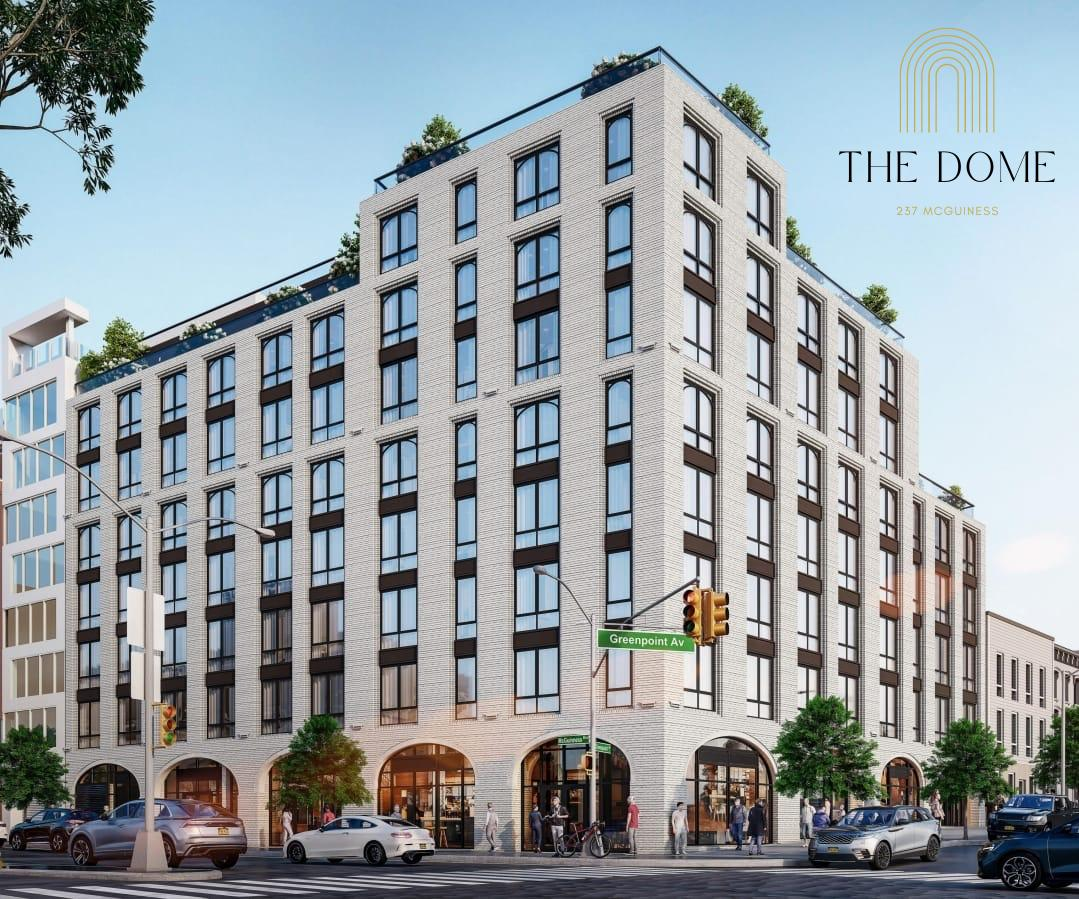Charles Lockwood on LPC's 40th Birthday
Forty years ago on April 19, 1965 New York City Mayor Robert F. Wagner did something unthinkable: He signed the city’s first landmark preservation law.
40th Anniversary of the New York City Landmarks Law
by Charles Lockwood
Forty years ago on April 19, 1965 New York City Mayor Robert F. Wagner did something unthinkable: He signed the city’s first landmark preservation law.
Overnight, New York went from a city where major civic landmarks were being demolished with alarming frequency in the 1950s and early 1960s to the city with the most comprehensive preservation law in the nation, Geoffrey Platt, the first chairman of the Landmarks Preservation Commission told the New York Times in 1965. New York’s powerful real estate interests had fiercely lobbied against the measure. An official at the Downtown-Lower Manhattan Association warned that the preservation law would seriously impair the city’s real estate values.
Today, this prophecy of doom seems almost laughable. New York City not only has the most expensive, most competitive real market in the US, it also has the strongest and most comprehensive landmark protections in the nation. By mid-April 2005, the Landmarks Preservation Commission had designated 1,111 individual buildings and 7 bridges as individual landmarks. Of particular importance, the Commission has also named 83 historic districts, thereby protecting some of New York’s best-loved neighborhoods and literally thousands of significant buildings from demolition or inappropriate facade alterations. Virtually every Brooklyn brownstone neighborhood is largely (or partly) protected by historic district status.
Can anybody imagine what Manhattan’s and Brooklyn’s brownstone neighborhoods would look like today without the protection of the Landmarks Preservation Commission? Many of Greenwich Village, the Upper East Side, and the Upper West Side’s handsome townhouses would already have been demolished for high-rise apartment buildings. Brooklyn’s brownstone neighborhoods would be under the gun right now. High-rises would be sprouting throughout Brooklyn Heights and Park Slope. Developers would be eyeing all the other brownstone neighborhoods for get-rich-quick development opportunities.
The lack of Landmark Preservation Commission protections would also have meant that property owners could rip off their stoops, or cover their townhouses in asphalt shingles, no matter how it disfigured a block and affected nearby real estate values.
An Impressive Track Record
The landmarks law is very much a success, says Paul Goldberger, the Architecture Critic of the New Yorker and Dean of Architecture at Parsons School of Design. That doesn’t mean it’s a total success, or that mistakes have not been made under its jurisdiction. That’s inevitable.”
“If there’s any doubt, however, about its overall success, he continues, just remember that historic preservation has become an accepted fact of life in New York. The real estate industry no longer fights the law’s basic premise.
How did New York’s Landmarks Preservation Commission achieve so much success? And how is the Commission handling a series of new challenges that have arisen in the past few years?
Destroying Its Past
Until the 1970s, constant change—particularly the continual demolition and rebuilding of large areas of Manhattan had been the norm for well over a century. A man born 40 years ago finds nothing, absolutely nothing of the New York he knew, observed Harper’s Monthly in 1856. The landmarks, the objects which marked the city to him, as a city, are gone.
In the post-World War II building boom, New York seemed determined to destroy all evidence of its past. Remember, at that time, it was widely believed that cities were obsolete, recalls Kent Barwick, now President of the Municipal Arts Society, who served as fourth chairman of the Landmarks Preservation Commission (1977-1985). Even if cities were going to survive, the old areas, the grime, the filth had to be eliminated. That was the Futurama vision from the 1939 Worlds Fair in New York.
New York embraced the Futurama vision. Entire neighborhoods were leveled and rebuilt with freestanding apartment towers in the name of urban renewal. Highways slashed through neighborhoods. Thousands of Manhattan brownstones were demolished for white brick apartment buildings.
New Yorkers awoke from their Futurama-induced stupor with the 1963 demolition of McKim, Mead & White’s magnificent Pennsylvania Station. Until the first blow fell, the New York Times declared on October 30, 1963, no one was convinced that Penn Station really would be demolished or that New York would permit this monumental act of vandalism.
I can remember catching trains at Penn Station and seeing the pickets outside the station protesting its impending destruction, recalls Kent Barwick. I remember thinking, ‘Yes, they’re right, this is a beautiful thing. It’s a shame that it has to be destroyed, but it is the natural order of things.’ . . . I’m so glad that I was wrong.
In retrospect, McKim, Mead & White’s Pennsylvania Station had to die, so that thousands of other historic New York buildings might live. The furor over its destruction, coupled with the subsequent loss of several other prominent landmarks, galvanized public opinion and led to the signing of the 1965 landmarks law.
Landmarks Go To Court
The early years of the Landmarks Preservation Commission were fraught with peril, because New York’s real estate interests were still eager to strike it down. Early Commissions, therefore, administered their power very conservatively, so that the law didn’t get thrown out or fatally weakened in the courts.
One of the law’s strengths was its simplicity. A landmark had to be more than 30 years old. Any alteration to a building’s exterior had to be approved by the Commission for architectural appropriateness. Interior changes were not covered by the law, unless they affected the exterior, or if the interior was specifically designated as a landmark. Finally, the Commission could designate entire neighborhoods as protected historic districts. Brooklyn Heights was the first historic district in the city.
Each new year brought greater strength to New York’s historic preservation forces. Jane Jacobs’ Life and Death of Great American Cities (1961) was a national best-seller that became part of many college course curriculums, indoctrinating an entire generation in the importance of honoring our cities, including their pasts.
Equally important, the rediscovery of New York’s brownstones and the subsequent revival of over a dozen historic neighborhoods like Chelsea and the Upper West Side in Manhattan and Park Slope and Fort Greene in Brooklyn transformed thousands of young, well-educated New Yorkers into homeowners…and ardent preservationists.
Within a generation, says Kent Barwick, New York changed from a city that didn’t care about its history, into one that appreciated the full range of its historic residential and commercial buildings, its streetscapes and neighborhoods, its parks, even its 1904 IRT subway stations.
Then came the momentous US Supreme Court case, Penn Central Transportation Co., v. N.Y.C., No. 77-444 in 1977.
The Grand Central case was a great battle, nobly fought, that firmly established the legitimacy of the landmarks law, says Paul Goldberger. In a 6 to 3 ruling, the Supreme Court declared that New York City could forbid the construction of an office tower on top of Grand Central Terminal, because that high-rise would damage the Beaux Arts-style station.
On its editorial page, the New York Times declared: Much more has been gained than the Terminal itself. Landmark law is a relatively new field, and the legislation is being slowly, painfully, and incrementally established through the courts. Zoning law was tested in a similar way in the early part of the century.
The Grand Central case immediately raised the power of the Landmarks Preservation Commission, which soon designated widely loved New York City commercial buildings like the Rockefeller Center, the Empire State Building, and Radio City Music Hall as landmarks. The Supreme Court decision also encouraged other cities to pass or strengthen their own landmarks laws.
Backed by the Supreme Court decision, the Landmarks Preservation Commission later designated large portions of the Upper East Side and the rapidly-reviving Upper West Side as historic districts, and in many Brooklyn brownstone neighborhoods. Such designations have significantly raised real estate values throughout New York. A study by the Independent Budget Office shows that real estate values have increased faster in historic districts than in comparable non-landmark areas, says Robert Tierney, current chairman of the Landmarks Preservation Commission.
Thousands of middle-class Manhattan and Brooklyn residents have become millionaires (often many times over), simply because they purchased a brownstone in a historic district 20 years ago.
Businesses and commercial real estate owners have also benefited. Just look at the restaurants, shops, and galleries on Lafayette Avenue and Fulton Street in Fort Greene. Hundreds of residents in nearby historic townhouses (not to mention the audiences at BAM) have revived this once-run-down commercial district.
Today’s Challenges
Despite its enormous accomplishments, the Landmarks Preservation Commission faces some genuine challenging its 40th year. Some preservationists and civic organizations believe that the Commission is no longer doing enough to protect the city’s historic neighborhoods in this era of soaring real estate prices and enormous development pressures.
The development forces are most serious in Manhattan. Landmarks West!, an Upper West Side civic organization, for example, is waging a vigorous campaign against the Commission’s refusal to give landmark designation to the Edward Durrell Stone-designed 1960s icon (known as the Lollipop Building because of its distinctive ground-floor columns) at 2 Columbus Circle to prevent its impending destruction.
Downtown, the influential Greenwich Village Society for Historic Preservation (GVSHP), which led the successful campaign to designate the Gansevoort Market Historic District, is trying to prevent the planned construction of several high-rises along the West Village’s Hudson River waterfront. The organization is urging the Landmarks Preservation Commission to enlarge the existing Greenwich Village Historic District toward the waterfront, and it is pushing the Department of City Planning to downzone the waterfront blocks. GVHSP wants to assure that any future new construction does not demolish landmark buildings along the waterfront or overwhelm the low-rise scale and finely-textured development pattern of the adjacent blocks.
Brooklyn, however, has hardly escaped real estate pressures. New residential buildings, including high-rise towers, are rising just outside designated historic districts in most brownstone neighborhoods. Further development near Atlantic Terminal, including the proposed stadium, could seriously impact adjacent neighborhoods, unless the buildings and resulting traffic are carefully planned with appropriate care and community input.
Another source of controversy within New York’s preservation movement is a growing difference of opinion among preservationists, and between preservationists and the Commission, about what constitutes a landmark building.
Every generation has its own views about landmarks. Fifty years ago, most New Yorkers considered post-Civil War brownstones think the Park Slope and Bed-Stuy to be hopelessly old fashioned and Victorian. How attitudes have changed.
Today, many New Yorkers scorn 1950s and 1960s buildings, other than a few obvious International Style classics like Lever House (1952) and the Seagram Building (1958) on midtown Park Avenue. Younger New Yorkers, however, see value and appeal in many 1960s structures, that are too old to be new and stylish, but aren’t old enough (by mainstream standards) to be really old and henceforth valuable. (Could Junior’s Restaurant at Flatbush and DeKalb Avenues be a landmark of the future?)
Considering that these disagreements come between like-minded friends, it’s time for the Commission and New York’s preservationists to study where their movement has been, and figure out where it should go. The timing is critical. Not only is a generation is coming to the fore with new ideals, but also fierce development pressures mean that long-ignored buildings and neighborhoods are now in play throughout the city.
One thing, however, is clear: The 1965 landmark law has made an extraordinary positive difference in the appearance and quality of life in New York City, and definitely in brownstone Brooklyn.
At an April 19, 2005 Gracie Mansion reception celebrating the 40th anniversary of the landmarks law current Landmarks Preservation Commission chairman Robert Tierney related the following anecdote to guests: Some years ago, Charles Platt, the first Commission chairman, interviewed the late Mayor Robert F. Wagner about his 1954-1966 term of office. Of all his achievements in office, Wagner told Platt, he expected to be best remembered for signing the April 19, 1965 Landmark law.
Charles Lockwood is author of Bricks and Brownstone, an architectural and social history of the New York townhouse, recently re-published in a new expanded version by Rizzoli.
charleslockwood.com





Fascinating! Thanks.
What’s the process if you want to try to get a building landmarked?
Glad to see something more from Lockwood, Browntoner!